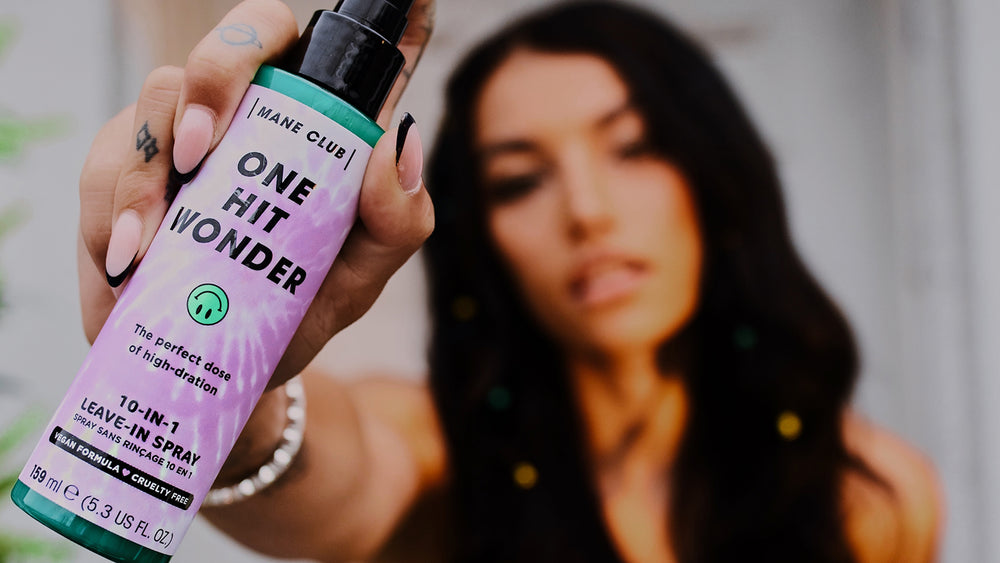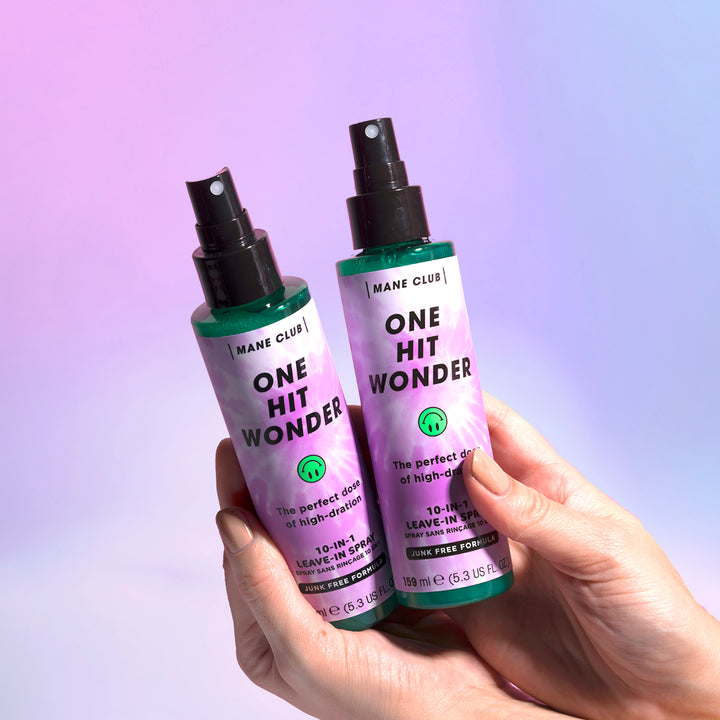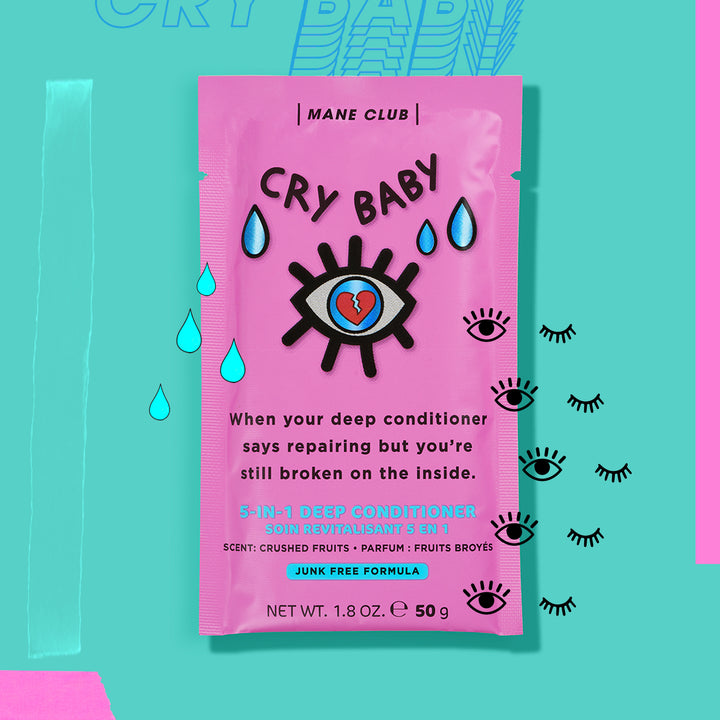Why Does My Hair Get So Tangled: Causes & How to Prevent Tangles from Happening?
Let's face it, knots in the hair are the worst and can be caused by various factors, but don't worry, we've got you covered. Knots can form when you don't give your hair the TLC it deserves, be it neglecting regular grooming, using heat tools too much, or not keeping your hair moisturized.
Hairstyles that put stress on the hair, such as braids, ponytails, or buns, can also lead to knots. Even more surprising is that environmental factors such as wind, humidity, and pollution can also contribute to the knot party in your hair. And let's remember the hair texture; curly or wavy hair is more prone to knots because of its texture. So, don't be a knotty nightmare; give your hair the love and care it needs, and you'll be strutting your knot-free locks in no time!
Why does my hair tangle?
Hair gets tangled due to various factors, such as lack of proper grooming, dryness, and damage to the hair.
Often, hair becomes knotted when the fibers catch on one another. Hairstyles such as braids, ponytails, and buns can increase knotting rates because they stress the hair more, as well as environmental factors like wind, humidity, and pollution that can cause knots. Curly or wavy hair has a texture that can accumulate knots, and certain hair products, such as gels and heavy creams, can contribute to tangling.
Knots in hair can be a frustrating and unsightly problem, but understanding the causes can help prevent them from forming. Here are some common causes of knots in hair:
- Long fine hair: Luscious locks can be challenging to maintain, especially when your strands are finer. Watch out for knots when brushing or combing your fine hair, as they may cause tearing.
- Lack of proper grooming: When hair is not combed or brushed regularly, tangles can form, eventually leading to knots.
- Dryness: When hair is dry, the scales on the hair shafts open up, making it more prone to tangling and knotting.
- Damage: Damaged hair is more prone to knotting because it is more fragile and prone to breaking.
- Certain hairstyles: Hairstyles that stress the hair, such as braids, ponytails, or buns, can make it more prone to knotting.
- Heat: Regular use of hot tools on your hair without heat protectant can cause damage and knotting.
- Environmental factors: Wind, humidity, and pollution can all contribute to knotting in hair.
- Thick and curly hair texture: Curly or wavy hair is more prone to knots because of its texture.
- Hair products: Regular use of hairspray, mousse, or gel can also cause hair to clump or knot together if it is not maintained correctly.
By understanding these causes, you can take steps to prevent knots from forming and keep your hair looking smooth and tangle-free.
How to minimize or avoid tangling
To prevent hair from getting tangled, it's essential to keep it moisturized and well-conditioned. This can be done by using a deep conditioning treatment or incorporating oils like coconut or argan oil into your hair care routine. Additionally, using a wide-toothed comb or a brush specifically designed for detangling can help to minimize breakage and damage when combing through tangles. Avoiding hairstyles that put extra stress on the hair and regular trimming to remove split ends can also help to reduce the likelihood of tangling.
Here are some tips that can help minimize or prevent tangling in your hair:
Use a Leave-In Conditioner to Hydrate and Detangle
Leave-in conditioners can help prevent knots in hair by providing several benefits. One key benefit is that it helps to moisturize the hair, making it less prone to tangling and knotting. When hair is dry, the scales on the hair shafts open up, making it more prone to tangling and knotting. By keeping hair hydrated, a leave-in conditioner can help to keep the scales closed, making it less likely to tangle. Additionally, a leave-in conditioner can help to smooth the hair and make it more manageable, making it easier to comb or brush through the hair without causing damage or breakage.
Another benefit of a leave-in conditioner is that many are formulated to help detangle hair, making it easier to comb or brush through the hair without causing damage or breakage. Moreover, a leave-in conditioner can also help improve the hair's texture, making it less prone to knotting. Using a leave-in conditioner on your hair can help keep it moisturized, smooth, protected, and detangled, reducing the likelihood of knots forming.
Use a hair mask weekly to detangle and strengthen
A weekly hair mask can be an effective way to prevent tangles in your hair. Hair masks are designed to deeply nourish and moisturize the hair, which can help to keep it healthy and less prone to tangling. The extra moisture provided by a hair mask can help to close the scales on the hair shaft, making it less likely to tangle. Also, hair masks often contain ingredients that can help repair damage, such as split ends, which can contribute to tangling. A weekly hair mask can help keep your hair healthy and tangle-free by repairing damage and adding moisture.
In addition to providing moisture, a weekly hair mask can help strengthen the hair. Stronger hair is less prone to breakage, which can contribute to tangling. Hair masks often contain ingredients such as proteins that can help to strengthen the hair and make it more resilient.
For extra-tangled strands, CRY BABY Repairing Hair Mask can help repair strands while reducing breakage and conditioning locks. Wash your worries (and your tears) away, queen.
Use hot tools less
Using fewer hot tools can help prevent hair tangles because heat can dry out the hair and cause damage to the hair shafts. When hair is dry, the scales on the hair shafts open up, making it more prone to tangling and knotting. Additionally, damage to the hair shafts can cause them to become brittle and more prone to breaking, which can contribute to tangling. Excessive use of hot tools such as flat irons, curling irons, and hair dryers can dry out hair, cause damage, and make it more prone to tangling. Using fewer hot tools can help keep your hair moisturized and healthy, reducing the likelihood of tangles.
Sleep on a satin pillowcase
Sleeping on a satin pillowcase is luxurious and can also be a game-changer for preventing hair knots. Cotton pillowcases can cause friction on the hair, leading to tangles and knots, while satin pillowcases glide smoothly over the hair, preventing tangles and knots from forming. Plus, satin pillowcases are less absorbent than cotton pillowcases, which can help keep your hair's natural oils intact, promoting healthy and moisturized hair. So, ditch that rough cotton pillowcase and upgrade to a satin one for hair that is smooth, knot-free, and oh-so-sleek in the morning.
Braid your hair to sleep on
Braiding your hair before sleep can help prevent tangles because it keeps the hair contained and in a controlled position. When hair is loose, it can quickly become tangled and knotted as you move during sleep. By braiding your hair, you effectively keep it in a controlled position, reducing the movement and friction that can cause tangles. Braids can also help minimize damage caused by rubbing the hair against a pillowcase, as braids distribute the pressure more evenly. A braid can also help to keep your hair from getting tangled with itself. So, braiding your hair before going to bed is a simple yet effective way to prevent tangles and wake up with smoother, tangle-free hair in the morning.
Don’t dry hair with a towel
If you want to avoid knots in your hair, you should say no to towel-drying! Rubbing your hair with a towel is like trying to wrangle a wild animal- it creates a lot of friction and can cause tangles, knots, and frizz. Instead of rubbing your hair with a towel, gently squeeze the excess water out of your hair, preventing the formation of knots. Another fun way to avoid knots is using a t-shirt or microfiber towel to dry your hair, as they are less likely to cause friction and damage than a traditional towel. So, next time you step out of the shower, resist the urge to rub your hair with a towel, gently squeeze the water out, or use a t-shirt or microfiber towel for a knot-free hairdo!
Get regular trims to remove damaged hair
Regular trims and haircuts help prevent tangles and keep your hair looking chic. Split ends and damaged hair are like little knots waiting to happen, and regular trims will nip those in the bud. Regular haircuts also help to keep your hair looking fresh and healthy, which is always a good look. Plus, a regular haircut can also help maintain your hair's shape and style, making it easier to manage and style and less prone to tangling. So, don't be shy; book that salon appointment, and show off your knot-free locks confidently. Your hair will thank you for it!
How to detangle hair
Detangling hair can be daunting, but you can do it quickly and painlessly with the right approach.
Here are some tips on how to detangle your hair:
1. Separate hair into sections
Separating your hair into sections can help detangle it by making it easier to focus on small, manageable sections of hair at a time. It also helps to reduce the amount of tangling that occurs by separating the hair, making it less likely to knot up and become matted. This way, you can focus on detangling one section at a time, starting at the ends and working your way up, which helps to minimize breakage and damage.
2. Spray a leave-in conditioner or detangler on your hair
Leave-in conditioner can help detangle hair by providing a layer of lubrication between the hair fibers, making it easier to comb or brush through the hair without causing damage or breakage. Leave-in conditioner moisturizes the hair, making it more pliable and less prone to tangling, making it easier to work through tangles. It can also protect the hair from the friction caused by the comb or brush, helping to prevent breakage and damage.
3. First, use your fingers to detangle your hair
Starting with your fingers (especially wet hair) can be a gentle and effective way to detangle. Using your fingers, you can work through tangles starting from the ends of your hair and working your way up, which can help prevent breakage and damage. Additionally, fingers can be gentler and less likely to cause damage or breakage than a brush or comb, allowing you to work through tangles and knots with less force, making an excellent option for those with curly or coily hair.
4. Grab a wide-tooth comb and comb from the bottom up
Using a wide-tooth comb and working from the bottom up can help detangle hair by reducing the force and tension applied. A wide-toothed comb is less likely to cause breakage and damage than a fine-toothed comb. Starting at the bottom of your hair and working your way up allows you to gradually work through tangles, starting with the ends where tangles are more likely to occur. This method can also help to prevent pulling and tugging on the hair, which can cause damage and breakage.
5. Comb through detangled hair a few times
Combing detangled hair multiple times can help it stay detangled by redistributing the natural oils from the scalp throughout the hair. It also allows you to identify and remove any tangles that might have formed since your last combing. Furthermore, it can also help to maintain the shape and style of your hair, making it easier to manage and style and less prone to tangling. Combing your hair multiple times can help keep it smooth and tangle-free, especially after washing or styling.
Following these tips, you can detangle your hair quickly and minimize breakage and damage in the future.








